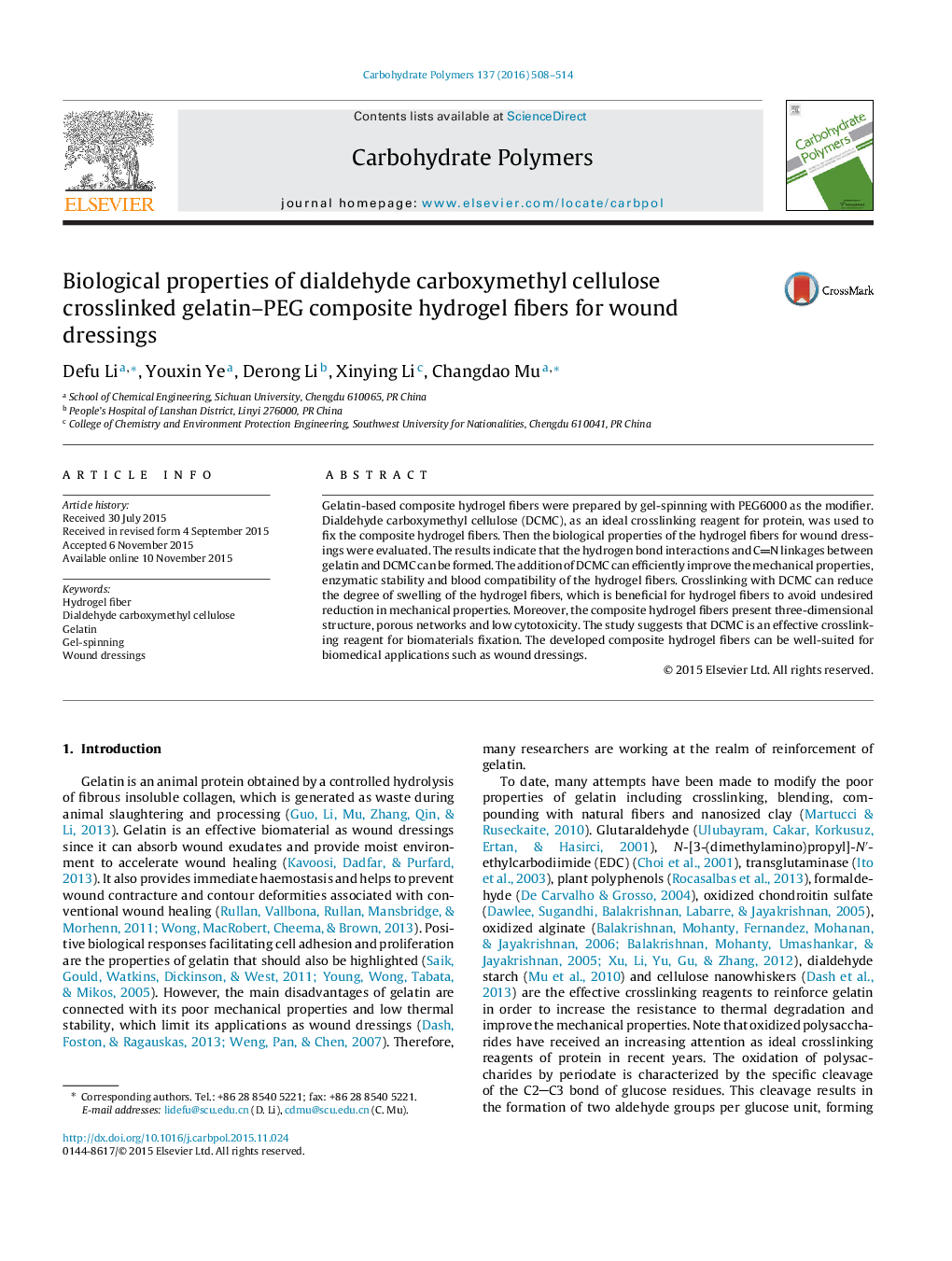| Article ID | Journal | Published Year | Pages | File Type |
|---|---|---|---|---|
| 1383192 | Carbohydrate Polymers | 2016 | 7 Pages |
•Gelatin–PEG composite hydrogel fibers were prepared by gel-spinning.•DCMC could improve the biological properties of the hydrogel fibers.•DCMC was an ideal crosslinking reagent to fix the hydrogel fibers.•The hydrogel fiber was well-suited for biomedical applications with low cytotoxicity.
Gelatin-based composite hydrogel fibers were prepared by gel-spinning with PEG6000 as the modifier. Dialdehyde carboxymethyl cellulose (DCMC), as an ideal crosslinking reagent for protein, was used to fix the composite hydrogel fibers. Then the biological properties of the hydrogel fibers for wound dressings were evaluated. The results indicate that the hydrogen bond interactions and CN linkages between gelatin and DCMC can be formed. The addition of DCMC can efficiently improve the mechanical properties, enzymatic stability and blood compatibility of the hydrogel fibers. Crosslinking with DCMC can reduce the degree of swelling of the hydrogel fibers, which is beneficial for hydrogel fibers to avoid undesired reduction in mechanical properties. Moreover, the composite hydrogel fibers present three-dimensional structure, porous networks and low cytotoxicity. The study suggests that DCMC is an effective crosslinking reagent for biomaterials fixation. The developed composite hydrogel fibers can be well-suited for biomedical applications such as wound dressings.
